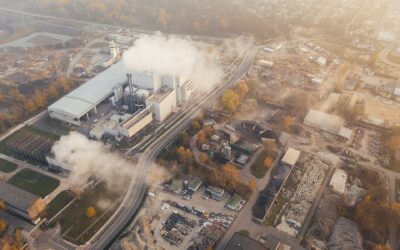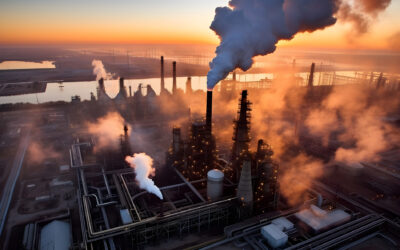Many climate-protection programs are in place and helping the environment. A key part of helping the environment is absorbing or sequestering the carbon dioxide (CO2) from the atmosphere. And one natural way to do this is with trees, as they absorb CO2. This is why forest preservation and reforestation is so critical.
REDD+, a framework developed as a part of the Paris Agreement, aims to help preserve and restore our world’s forests. Learn all about REDD+, what it does, and why it’s so important below.
What Does REDD+ Stand For?
REDD-Plus (REDD+) has two key parts to its name. The “REDD” is an acronym for Reducing Emissions from Deforestation and Forest Degradation. The “Plus” stands for the conservation of forests, the sustainable management of forests, and enhancing forest carbon stocks.
So, as its name indicates, REDD+’s main focus is to help combat climate change and global warming by stopping the destruction of forests, which act as carbon emission sinks by absorbing the carbon from the air. The United Nations (U.N.) backs the REDD+ framework established under the Paris Agreement.
What Countries Are a Part of REDD+?
Developing countries in subtropical or tropical regions are eligible to participate in REDD. Country participants have signed agreements in the REDD Readiness Fund. Currently, 65 countries are participants in REDD+, and they are:
- Argentina
- Bangladesh
- Benin
- Bhutan
- Bolivia
- Burkina Faso
- Cambodia
- Cameroon
- Central African Republic
- Chad
- Chile
- Colombia
- Republic of the Congo
- Costa Rica
- Côte d’Ivoire
- Democratic Republic of the Congo
- Dominican Republic
- Ecuador
- El Salvador
- Equatorial Guinea
- Ethiopia
- Fiji
- Gabon
- Ghana
- Guatemala
- Guinea Bissau
- Republic of Guinea
- Guyana
- Honduras
- India
- Indonesia
- Jamaica
- Kenya
- Lao PDR
- Liberia
- Madagascar
- Malawi
- Malaysia
- Mexico
- Mongolia
- Morocco
- Myanmar
- Nepal
- Nigeria
- Pakistan
- Panama
- Papua New Guinea
- Paraguay
- Peru
- Philippines
- Samoa
- Solomon Islands
- South Sudan
- Sri Lanka
- Sudan
- Suriname
- Tanzania
- Thailand
- Togo
- Tunisia
- Uganda
- Vanuatu
- Vietnam
- Zambia
- Zimbabwe
What Is the Difference Between REDD and REDD+?
REDD and REDD+ are very similar, as both focus on the benefits of the world’s forests and how these massive carbon sinks can aid our goal of stopping large-scale climate change. However, they have some very small differences.
REDD focuses solely on preventing deforestation and forest degradation. REDD+, on the other hand, builds upon the REDD framework by adding in the implementation of forest conservation, sustainable forest management, and forest sink enhancement. It’s a subtle difference, but a difference nonetheless.
What Has REDD+ Done?
REDD+ has helped nations worldwide take initiatives to preserve forests and sustainably manage them. To date, REDD+ activities now cover roughly 1.35 billion hectares of forest area worldwide, which is about 62% of forest land in developing countries.
The UN Climate Change Secretariat has taken technical assessments of REDD+ for 10 years. During this time, 60 developing countries have entered into REDD+ activities, and 13 of these 60 countries have reportedly removed 10 billion tons of carbon dioxide (CO2) emissions from the air. And because of this success, these 13 countries can now seek results-based financing.
How Effective Is REDD+?
While REDD+ has made strides in preventing deforestation and promoting forest conservation, it’s not been as effective as many had hoped. A big issue has been funding, as non-government organizations and private sector corporations have been slow to get in on funding, and developed countries have been hesitant to pump in the billions of dollars it needs to finance conservation projects.
Administrators created a carbon market where corporations and governments could purchase REDD+ carbon offsets, but this was met with immediate concerns. Some of the issues included the accuracy of measuring greenhouse gas emissions (GHG emissions) these forests sequestered.
The other big issue was concern that these REDD+ carbon offsets would be significantly cheaper than technical solutions, such as renewable energy projects. This would allow organizations to simply purchase cheap REDD+ offsets instead of focusing on emission reductions.
REDD+ is making an impact, as mentioned earlier, but deforestation continues to rise. In 2019, tropical forest destruction increased to 3.8 million hectares of old-growth forests. And this trend has shown no signs of slowing down.
Another concern is the permanence of these conservation efforts. Once a developing country qualifies for results-based funding, will it continue conservation efforts after receiving the funds from the REDD+ program?
For example, Brazil received $96 million for reducing its deforestation rates in 2014 and 2015. However, in the years following, forest deterioration increased significantly due to strong pro-development policies.
How Does REDD+ Work?
The REDD+ process is a relatively well-laid-out system that guides developing countries on forest conservation and reforestation, verifies their actions, and determines if they qualify for results-based payments. All in all, it’s a five-step process. Let’s look at each of the steps.
- Fulfill the Four Core Elements of REDD+
To start the process, a developing country must first perform the four key elements of REDD+. These elements are as follows:
- Create a REDD+ strategy: In this stage, the country will analyze what is causing deforestation and forest degradation and create an action plan or national strategy to address it. The plan must touch on certain key issues, such as land tenure, governance, gender equity, and the rights and livelihoods of indigenous people and local communities.
- Lay out a national forest monitoring system: This system will define what it’s monitoring, how it will monitor it, and why the country chose to take this approach.
- Publish a safeguards information system: This system will lay out how the country plans to address potential environmental and social risks of a REDD+ program. A key part of the REDD+ program is that no projects can cause negative environmental or social issues.
- Create a forest reference level (FRL): This uses historical data to predict future baseline emissions that the actual emissions will be compared to for emission-reduction estimates. Third parties then analyze and verify the FRL and publish their findings on the REDD+ Info Hub.
- Measure and Report Actual Emissions
The actual emissions reductions are then measured during the “crediting period” and reported in the country’s biennial update report. This report shows how the country integrated the REDD+ mechanism and that it complies with the Paris Agreement.
- Analysis and Verification
An independent third party then reviews the emission reduction estimates. The third party publishes all its findings on the REDD+ Info Hub.
- UNFCCC Review
The United Nations Framework Convention on Climate Change (UNFCCC) Secretariat will review the country’s documentation and verify it meets all the REDD+ requirements.
- Creation of REDD+ carbon credits
The country’s emission reductions are finally posted on the REDD+ Info Hub as “REDD+ Results.” Then, with the national government’s approval, REDD+ creates a registry to serialize every metric tonne of GHG emission reductions that companies and individuals can purchase to offset their own emissions.
What Are REDD+ Activities?
Five activities comprise REDD+ projects. These activities and an example of each are as follows:
- Reducing emissions from deforestation: Deforestation is when forest land is converted into non-forested land. An example of this action would be reducing the rate at which forested land is converted for industrial agriculture.
- Reducing emissions from forest degradation: Forest degradation is when humans cause the loss of carbon stocks within forest land that remains forested land. An example of this REDD+ activity would be reducing the logging or wildfire rates within a forested area.
- Conservation of forest carbon stocks: This is any effort to conserve existing forests, such as expanding protected forest areas.
- Sustainable management of forests: This is the act of bringing the rate of tree extraction in line with the rate of natural growth to ensure net-zero emissions. An example of this action would be slowing the extraction rate in a protected forest area.
- Enhancement of forest carbon stocks: This is when non-forested land is converted into forest land or recovering degraded forests. An example of this would be protecting degraded forested land so it can grow into fully forested land again.
What Are Some Challenges of Implementing REDD+?
Plenty of obstacles make implementing REDD+ difficult, but the biggest issues are political and economic. On the political side, you have politicians seeking to grow their big cities and needing the forest land to do so. They also need to feed their people and want to convert forested land into agricultural land for farming.
On the industrial side, you have businesses that see forested land as potential space for their businesses to expand; they put profits over climate change mitigation.
How Does REDD+ Reduce Deforestation?
As its name implies, REDD+ aims to reduce deforestation and increase reforestation, but how does it do so? First, it incentivizes the prevention of deforestation, giving countries monetary benefits for preserving their existing forests. Second, it incentivizes the prevention of forest degradation and recovering previous forest loss.
REDD+ also helps reduce deforestation by incentivizing sustainable forestry management, such as slowing necessary logging practices so they better align with new growth rates. This helps ensure new forest growth replaces those trees that were cut down.
Is REDD+ Sustainable?
One of the key parts of REDD+ is sustainable forest management. So, while its main focus is preventing deforestation and encouraging reforestation, the REDD+ framework also realizes that some logging is necessary.
However, it encourages doing so sustainably. This means it encourages countries to promote planting new trees in place of those extracted and slowing the extraction rate to match the new growth rate.
Because forest protection also includes preventing new development from causing deforestation, the REDD+ framework also promotes sustainable development. This adds to its influence on sustainability overall.
How Does REDD+ Reduce GHG?
Forests act as massive carbon dioxide sinks, as they absorb this greenhouse gas as a part of photosynthesis. On average, a mature tree will absorb up to 22 kilograms of CO2 annually. So, an entire forest can absorb many metric tonnes of CO2, helping reduce global emissions.
Through monetary incentives, REDD+ focuses on forest protection, reforestation, and sustainable forest management. So, in this process, REDD+ helps reduce GHG emissions.
Does REDD+ Include Reforestation?
REDD+ not only incentivizes avoided deforestation, but it also may compensate countries for reforestation. Whether it’s recovering a degraded forest or converting non-forested land into new forest land, it all counts toward the country’s net emissions reduction and can be converted into REDD+ carbon credits. So, yes, REDD+ includes reforestation.
REDD+ Is Still a Work in Progress, But It Has Potential
REDD+ is an imperfect system, but it has shown signs of effectiveness. Like many climate-change-mitigation projects, it will take time to perfect. However, it’s driven many countries to become more conscious of their precious forests and work toward preserving them. Plus, it offers individuals and organizations another carbon market from which to purchase carbon credits to aid them in their path to becoming net-zero GHG emitters.
Terrapass also has carbon credit options to help businesses and individuals offset some of their GHG emissions. Whether you’re an individual looking to offset a cross-country flight or a business looking to offset its remaining emissions, check out the carbon credit options Terrapass has for you.
Brought to you by terrapass.com
Featured image:











